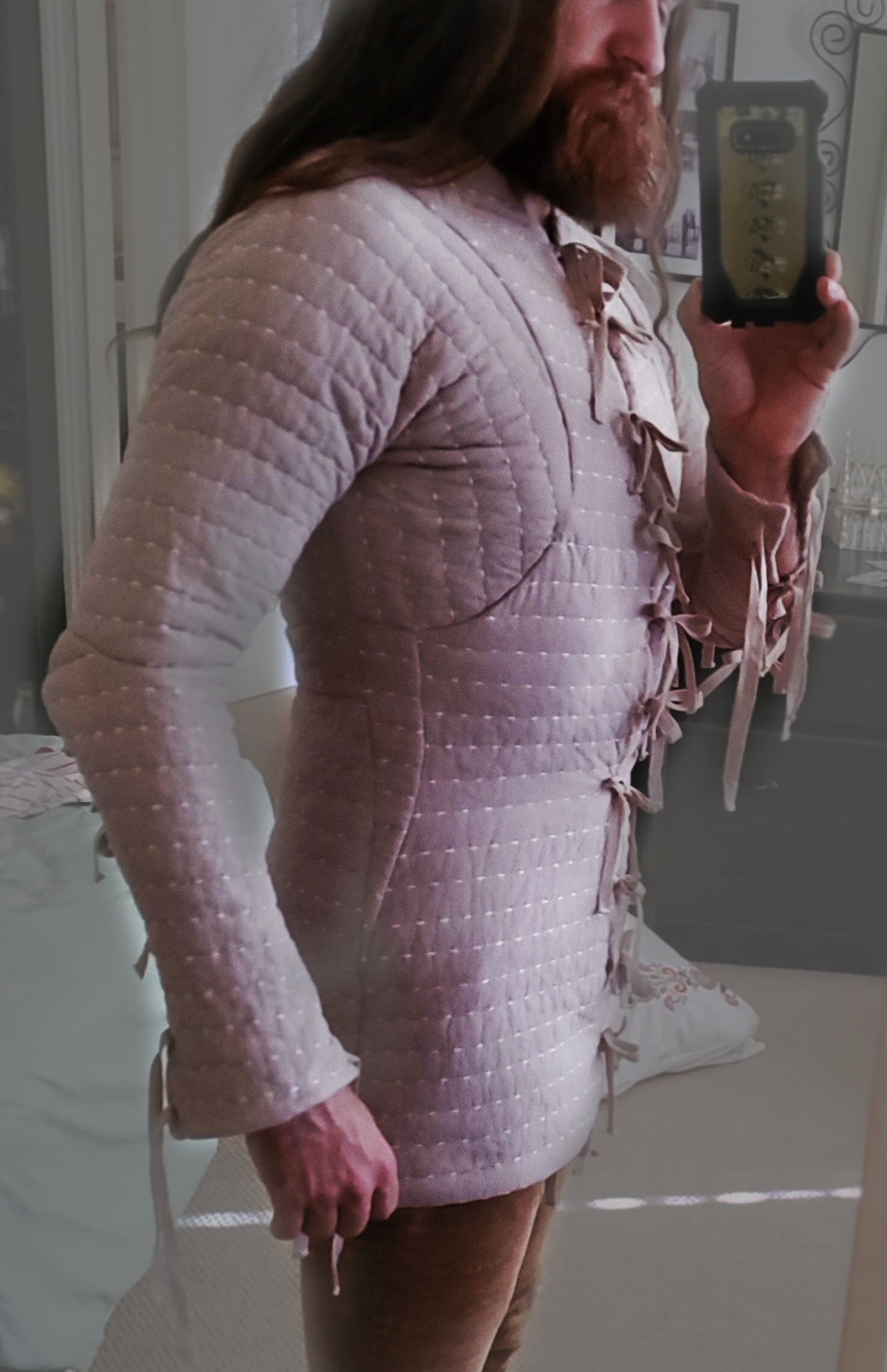Armor Smithing
I’m teaching myself how to build an early to Mid 15th century suit of armor. It’s meant to be fully functional and worn while fighting in tournaments and various medieval combat sports.
It’s Still in progress and has been an ongoing experiment. I had no previous experience working with steel before starting the project, so there’s been a lot of trial and error. It’s been a great way of learning different crafts as they come up.
The tools sort of have to be scavenged and modified. A great source is things intended for auto body mechanics and stonemasons. The large tongs are made from rebar. My anvil came from Craigslist.




The legs involve the most mechanical elements. The parts of the knees are pivoting on rivets The top of the thighs collapse to allow you to bend down. The thigh plates fully wrap around the leg, a feature of armor designed for fighting on foot. They are tied to the doublet through holes in the leather attached to the top.
The greaves are one of the trickiest pieces. They need to be skin tight in certain spots or else they slide down and cut into the top of the foot. they’ve gone through several changes, and have some patch-jobs on them, where I just riveted on a piece and sort of mashed the seam together. Hopefully, this will be less visible when everything is ground and polished. You see these kinds of blemishes on museum pieces so I don’t feel too bad about it.
The Helm is the heaviest piece out of fear of concussions and has the conceit of a modern liner. It’s one of the earlier pieces that I made. The decorative plate in the front is a patch repairing a stress crack. It’s based more on the helms depicted in heraldic displays than on an actual piece. The style is associated more with jousting, but there are depictions in historical artwork of it being worn on foot. It seemed like a chance for testing this out.
The turn shoes are made from deerskin with cowhide soles. The strap is split into five little strips anchored at different spots. They all pull together when the strap wraps around the ankle and buckles in place. I copied this from a surviving example I saw on Pinterest. It was fun to try and guess how it worked.


The buckles are made from twisted wire for a decorative roped look. The hinges are formed over a nail, then the teeth are shaped out with a grinder and file. weather a part of a hinge has one or two rivets determines how much play they have, and allows them to bend over complex curves.


The arming doublet serves as the foundation garment for the armor to attach to with laces. It’s made from a quilt sold as “Summer Weight” for comfort and breathability. The armscye being over the chest gives the arms a full range of motion. The pigeon-breasted silhouette from the 15th century allows for a cinched waist,(important for distributing the weight of the legs) without restricting your ribs when you breathing heavy.
The Gauntlets will be the mitten type, with a row of pivoting plates that move like a lobster tail. This is less dexterous than proper fingers but safer for the little bones in the hands.



